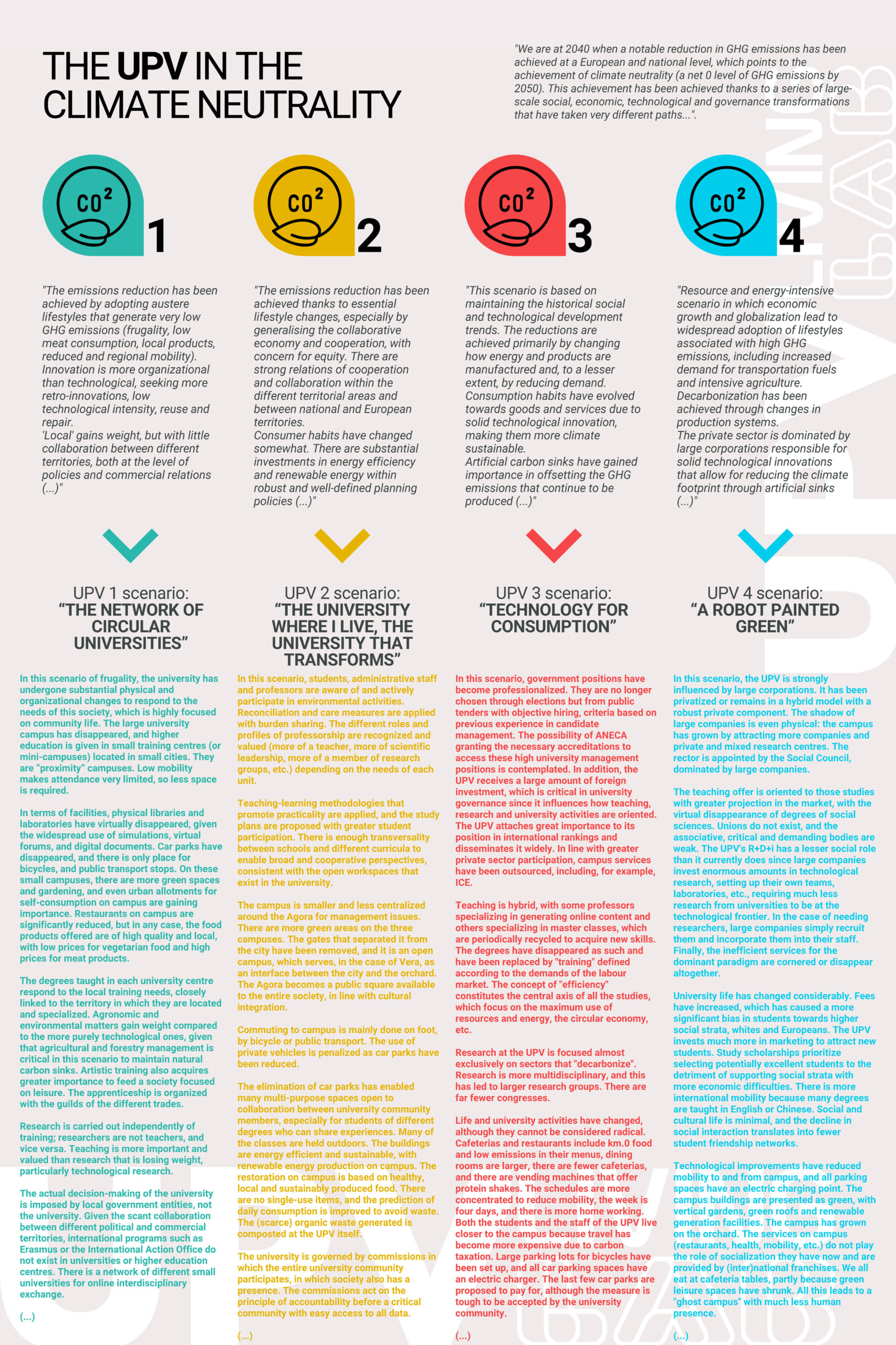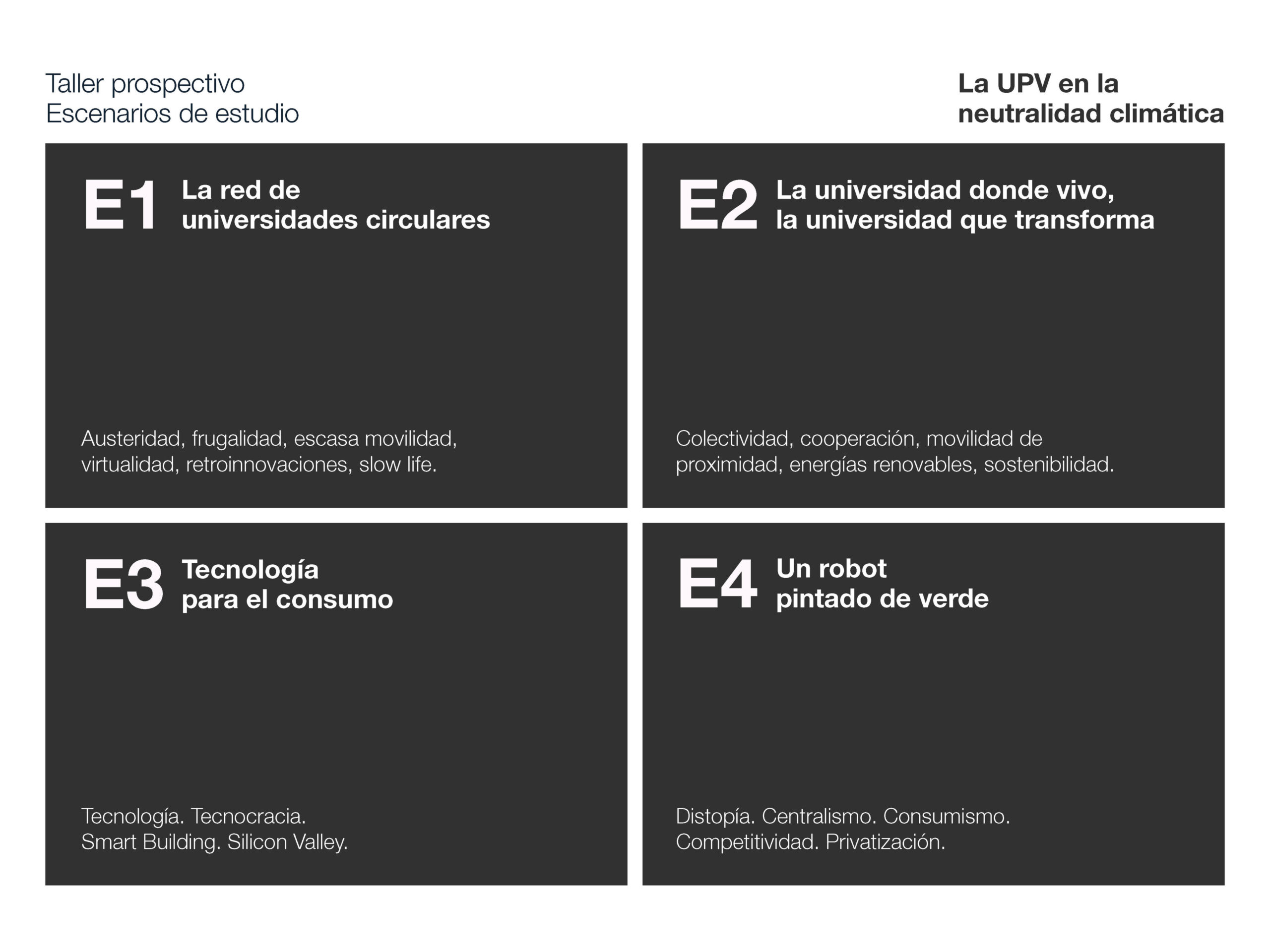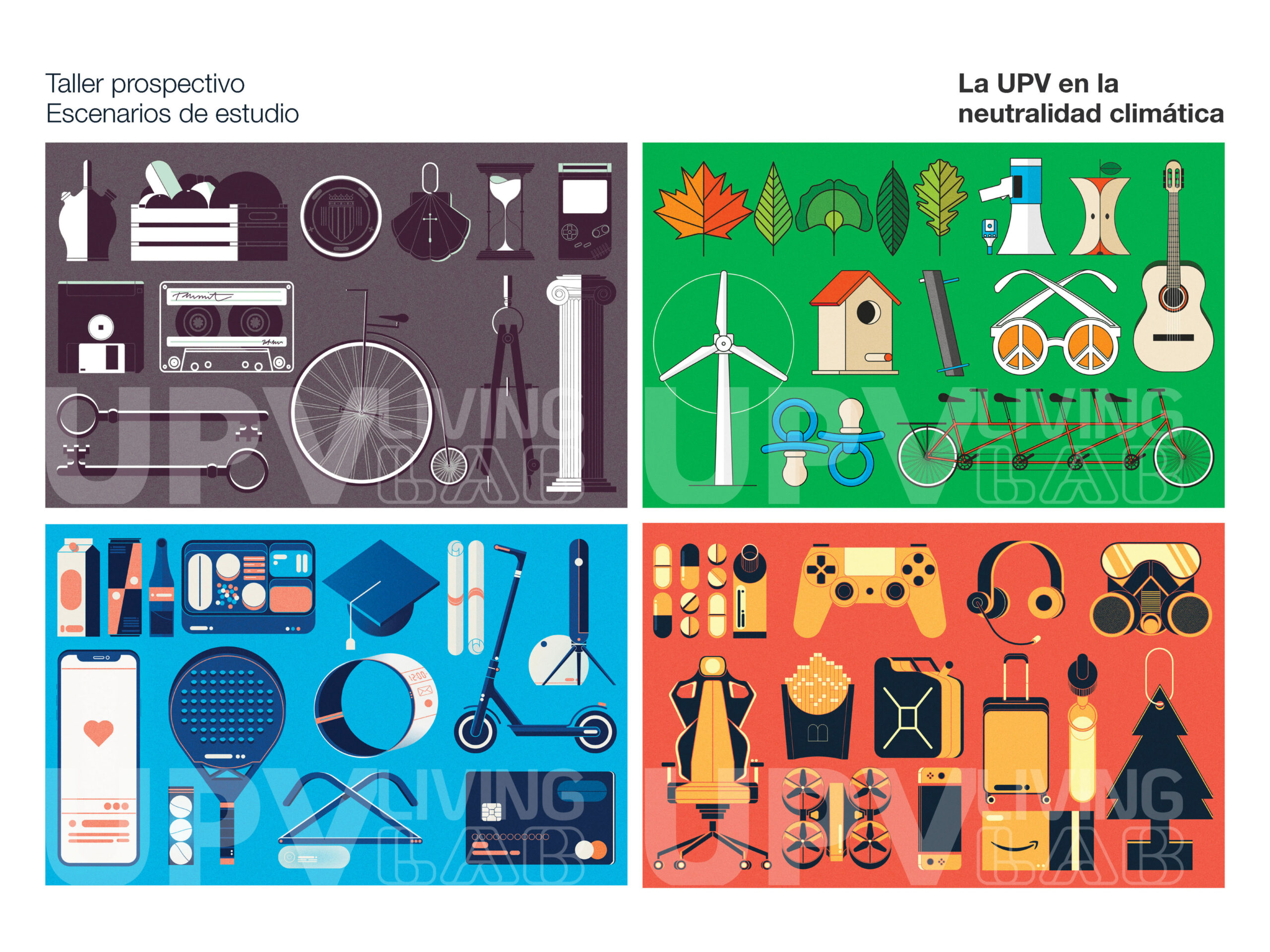On February 7, 2022, the UPV C12 Chairs alliance organized a prospective workshop entitled “The UPV in climate neutrality”. The results of this participatory experience were reported by Laura Arnalte Mur, Iván Cuesta Fernández, Víctor Martínez Gómez, Olga Moreno Pérez, and Dionisio Ortiz Miranda, the text of which is partially reproduced here.
The workshop began with reading an introductory text that projected the participant to a hypothetical scenario of climate neutrality in 2040. Subsequently, the group was divided into four teams that reflected on an initial narrative based on four different models of decarbonization. Based on these scenarios, the subgroups imagined the resulting university model.

As part of the activities of the UPV Living Lab, the initiative was presented by Professor Dionisio Ortiz Miranda at the Conference “The UPV-City Alliance for the Climate Mission” organized by the Chair of Urban Energy Transition of the UPV in October 2022.
For this presentation, UPV’s decarbonization scenarios were illustrated by the firm memosesmas.


[Text by memosesmas]
UPV in climate neutrality – The graphic project.
The project aims to graphically resolve the communication of the participatory prospective workshop organized between the UPV C12 Chairs alliance and the Vice-Rectorate for Sustainable Development of the Campus. During the workshop, four scenarios were proposed for 2040, a year in which a significant reduction of GHG emissions has been achieved at the European and national levels, clearly pointing to the achievement of climate neutrality. Each of these scenarios is structured around different themes from which “keywords” are extracted:
- Scenario 1. Circular universities network.Austerity, frugality, low mobility, virtuality, retro-innovations, slow life.
- Scenario 2. University where I live. The university that transforms.Collective, cooperation, proximity mobility, renewable energies, sustainability;
- Scenario 3. Technology for consumption.Technology. Technocracy. Smart Building. Silicon Valley;
- Scenario 4. A robot painted green. Dystopia. Centralism. Consumerism. Competitiveness. Privatization.
How to convey graphically all the nuances required by each of them and adapt the result to the multiple formats required? Two premises are taken into consideration: 1) The analogy with ethnography, a research method to describe and interpret the culture of different human groups or communities in order to be able to toeir different behaviours. 2) The use of the object is understood as the minimum unit of visual meaning that can convey information on the different scenarios presented.
As if from an ethnographic catalogue, we use the sum of objects and the relationships between the various scenarios to interpret the culture of the various scenarios to form a graphic narrative. In the face of the idea of making “unique” illustrations, we are committed to using a system capable of being expanded, modified and adapted to the formal needs and meaning required.